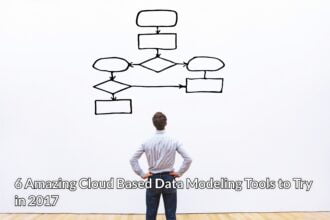Implementing a successful Business Intelligence strategy in the Food and Beverage Industry is simple — just stick to a few key rules
Implementing a successful Business Intelligence strategy in the Food and Beverage Industry is simple — just stick to a few key rules
 This past week, I spent a considerable amount of time with some of our food and beverage supply chain clients who are in the early stages of implementing a Business Intelligence Strategy. What I learned was interesting and reminded me of an old Hungarian saying my mom used to use – “Ahány ház, annyi szokás.” Knowing that many of you probably don’t read Hungarian, in English this translates to “There are as many customs as there are houses.”
This past week, I spent a considerable amount of time with some of our food and beverage supply chain clients who are in the early stages of implementing a Business Intelligence Strategy. What I learned was interesting and reminded me of an old Hungarian saying my mom used to use – “Ahány ház, annyi szokás.” Knowing that many of you probably don’t read Hungarian, in English this translates to “There are as many customs as there are houses.”
So what does this have to do with BI strategies you ask? Well it seems from all my conversations that “there are as many BI implementation strategies as there are companies.” That got me thinking, is there one “right” strategy to implement BI? I don’t really think so. Just as each household is unique, and has its own set of customs, so is each business.
Each business, has its own set of needs and challenges. For instance, one client faces pressure from a growing number of store types catering to specific consumer needs, such as supercenters, membership clubs, and convenience stores. Another is looking for opportunities to take advantage of the Consumer demand for more food options that meet a variety of needs, including health, taste and convenience, such as the “Gluten Free” fad. And yet another is trying to wrap its head around public policy and consumer sentiment is that is driving product traceability and fueling the demand for private label, organic foods and product freshness.
Because these challenges are so diverse, and for the most part these challenges are on top of all the other Business Intelligence work that a company has to do, each requires a unique BI implementation strategy. With that said, there are some commonalities that I think make life a little easier for everyone involved in rolling out a BI solution.
My advice: involve the end user; think big, but start small.
So let’s involve the user. There is so much awesomeness that can be gained from a well-executed BI solution. For example, one of our customers put together a “Traceability Taskforce” to create a forum where input from all involved could be taken into account. Like planning a group vacation, everyone has great ideas, experiences from the past, and most importantly, expectations of what the vacation will be like. Hearing what the people who will ultimately be impacted have to say, and involving them early is a key critical success factor in any BI implementation. Allowing the users to have input early in the process creates buy-in and ultimately lays the foundation for a successful BI rollout.
The drawback of involving the user community in the definition of the BI system is that you will end up with more (waaay more) ideas than can be implemented in an initial roll out. This, however, can be leveraged into the “think big” part. Allowing input from various departments, and involving end users and working with a BI expert creates a big picture view of how BI could ultimately benefit the organization. This will be different for every company, because each company has its own set of challenges and personalities. Vet and prioritize these requirements, and identify a few key problems that can be solved relatively simply.
This is where you start small. Roll something out and allow users to get used to the concept of using data and metrics to drive their behavior. Not everyone will be a convert immediately, so watch for resistance and address it as part of your strategy. Each business will have its own pace at which it can adopt and absorb new technologies and ways of thinking.
Push, but not too hard, or you will get resistance. Orchestrate some quick wins with some simple analytics. You’ve seen the sign by the bathroom in many big box hardware stores “This establishment accident free for (fill in the blank) days.” This, by golly, is a simple KPI metric used to measure site safety. Just posting this helps change employee behavior.
Once you start to realize the benefits from the initial analytics, you can start to roll out the more complex ones; metrics that will be used for strategic or long term planning purposes.
One idea might be to replace the reliance on spreadsheets, which by their nature contain errors and provide different answers to the same question, with a tool that allows everyone to see the same data at the same time (i.e., “one version of the truth.”)
To avoid disappointment, plan on a BI strategy full roll out to take not just a few months, but more in the range of 1-2 years. Provide new capabilities in stages, or phases. This allows your users to acclimate to the new way of doing business, and provide feedback on a contained functionality set. Massive implementations tend to require a tremendous amount of staff effort, and often create more problems than they solve. A phased approach can also help with business continuity and keep everything running smoothly.







